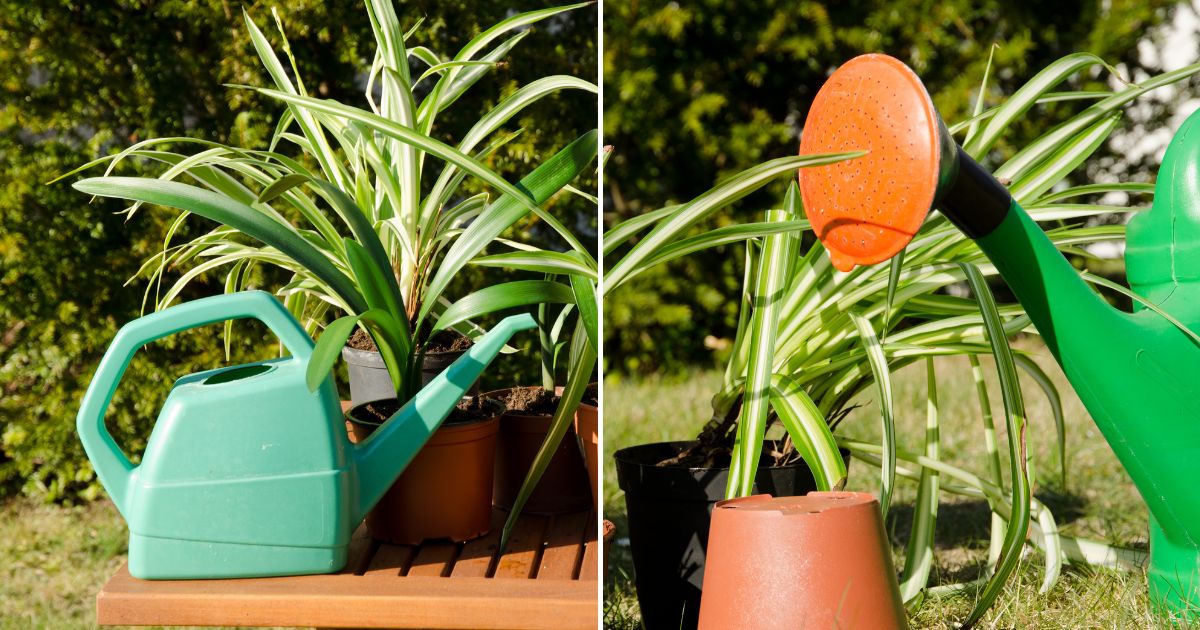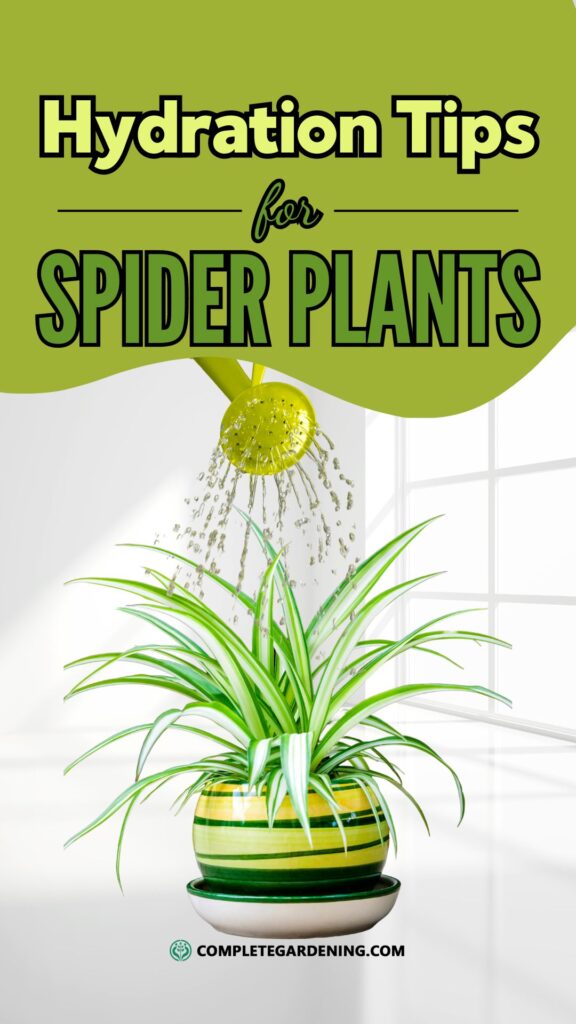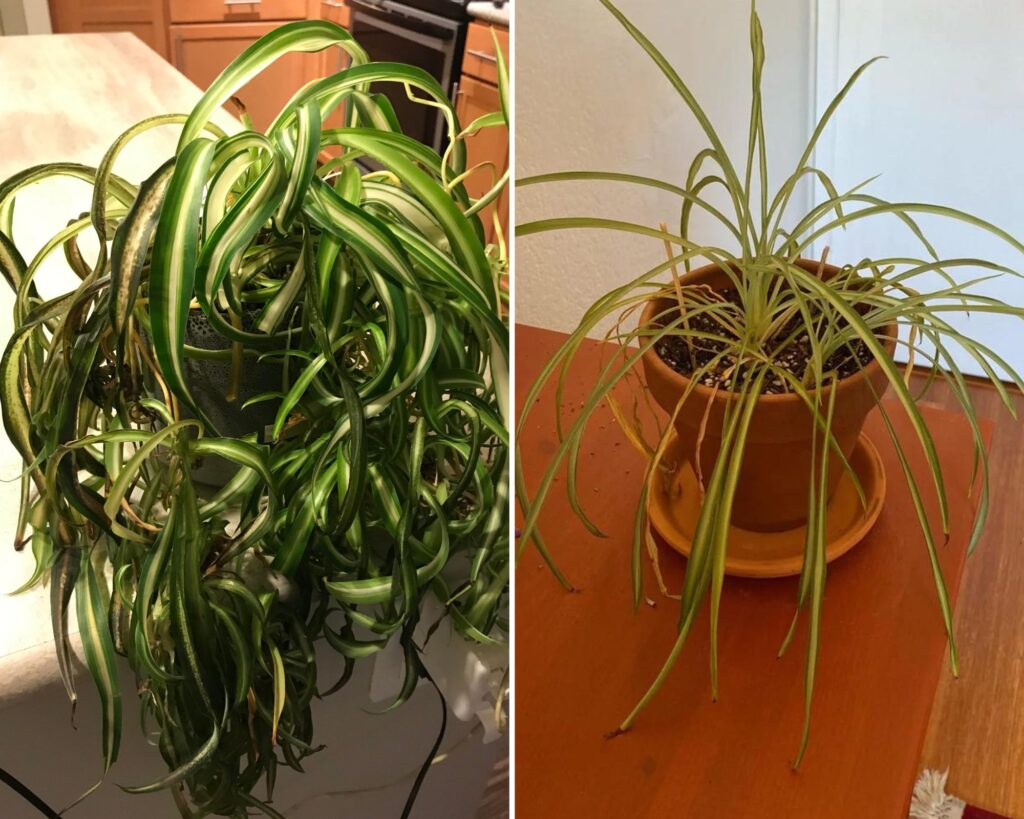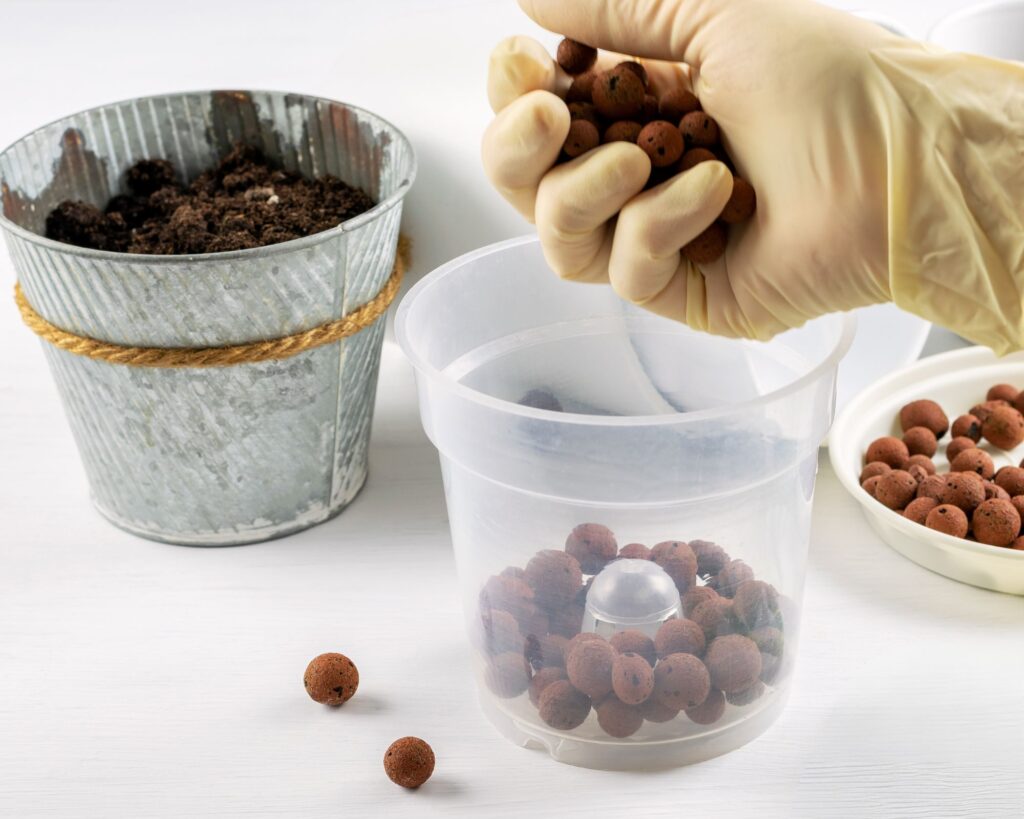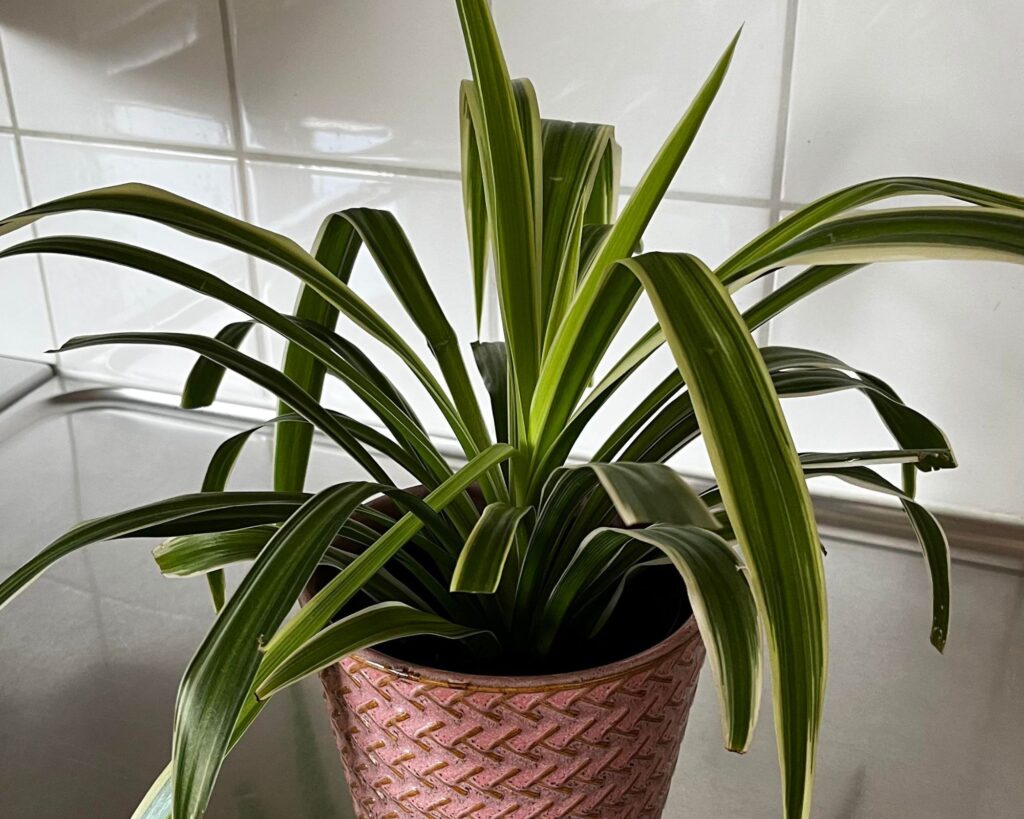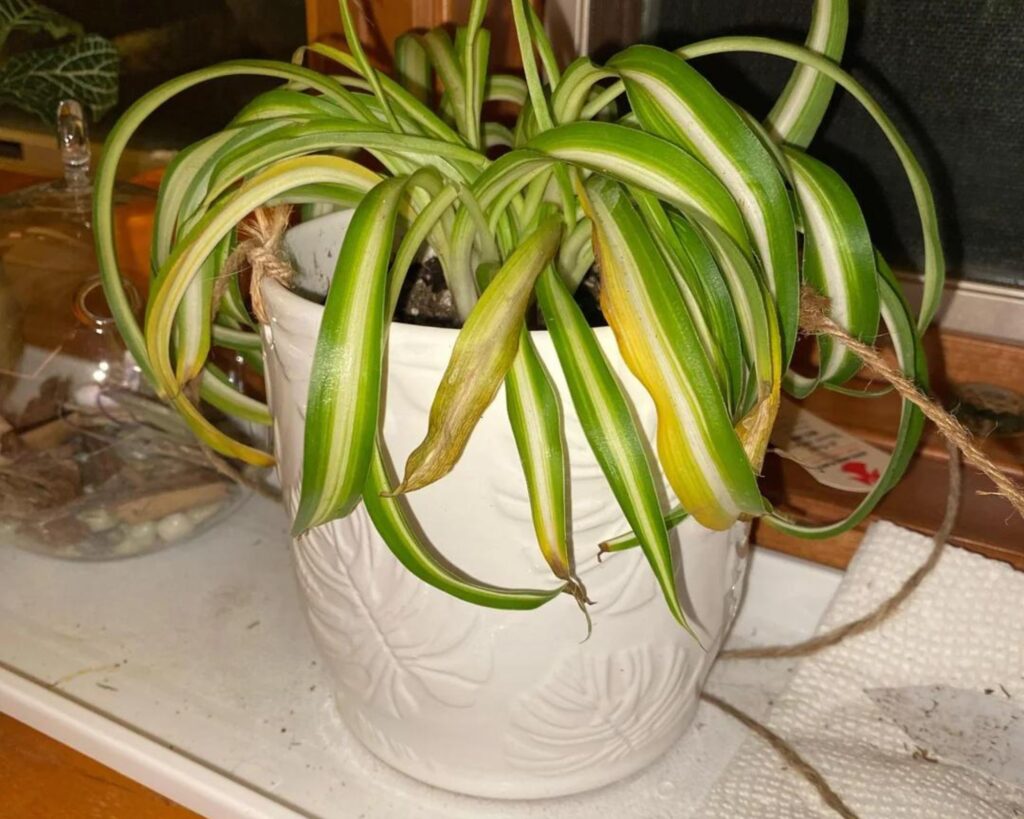Spider plants (Chlorophytum comosum) aren’t just a pretty face in your home garden—they’re resilient, adaptable, and effortlessly stylish. With their elegant arching leaves and charming spider-like offshoots, they’re a top choice for plant lovers everywhere. But here’s the catch: even the hardiest spider plant can falter without the right watering routine.
If you want your spider plants to truly flourish and not just survive, mastering the art of watering is key. In this guide, we’ll unravel the secrets to perfect hydration, revealing the best methods, common pitfalls, and expert tips to keep your spider plants thriving like never before.
Understanding Spider Plants and Their Watering Needs
Before diving into the specifics of watering, it’s essential to understand the nature of spider plants and their water requirements.
Spider Plant Origin and Adaptability
Spider plants are native to the coastal regions of South Africa, where they grow in well-drained soil with moderate moisture levels. In their natural habitat, they experience periods of heavy rain followed by dry spells, which has made them highly adaptable to varying watering conditions. This adaptability is one of the reasons they are so popular as houseplants, as they can tolerate occasional lapses in care.
Despite their resilience, spider plants have specific preferences when it comes to watering. Understanding these preferences will help you avoid the common pitfalls of overwatering or underwatering.
Signs of Overwatering and Underwatering
Before we discuss the best watering techniques, let’s first understand how to recognize the signs of overwatering and underwatering. This will help you identify if your current watering routine needs adjustment.
Overwatering
One of the most common mistakes in spider plant care is overwatering. Spider plants store water in their thick, tuberous roots, which means they are susceptible to root rot if kept in overly moist conditions for too long. Signs of overwatering include:
- Yellowing Leaves: If the leaves of your spider plant start turning yellow, especially the lower ones, it could be a sign of overwatering.
- Wilting: While wilting is often associated with underwatering, overwatered spider plants can also wilt due to the roots’ inability to take up water properly.
- Mushy Roots: When checking the roots, if you find them mushy and brown instead of firm and white, root rot has likely set in.
Underwatering
On the flip side, underwatering can also stress your spider plant. Signs of underwatering include:
- Brown Leaf Tips: One of the most common signs of underwatering is brown tips on the leaves. This could also be a sign of low humidity, but underwatering is a frequent cause.
- Drooping Leaves: If the leaves are drooping and feel dry to the touch, your plant is probably thirsty.
- Dry Soil: If the soil is completely dry and pulling away from the sides of the pot, it’s a clear indicator that the plant needs water.
The Best Watering Method for Spider Plants
Now that we’ve covered the signs of improper watering, let’s focus on the best watering practices for spider plants. The goal is to strike a balance where the plant receives adequate moisture without sitting in waterlogged soil.
1. Choose the Right Pot and Soil
Before even thinking about how much or how often to water, make sure your spider plant is in the right environment. The pot and soil you choose play a significant role in how well your spider plant retains or drains water.
- Pot Selection: Choose a pot with drainage holes to prevent water from accumulating at the bottom, which can lead to root rot. A well-draining pot, such as a terracotta or ceramic pot with holes, is ideal. If you prefer a decorative pot without drainage holes, use it as a cachepot by placing the spider plant in a plastic container with holes and setting it inside the decorative pot. Just remember to remove excess water after watering.
- Soil Choice: Spider plants thrive in well-draining soil. A standard houseplant potting mix is usually sufficient, but you can improve drainage by adding perlite or coarse sand. This ensures that excess water can quickly drain away, reducing the risk of root rot.
2. Watering Frequency
How often you water your spider plant depends on several factors, including the size of the pot, the type of soil, the indoor environment, and the season. However, a general rule of thumb is to water when the top inch of soil feels dry.
- Spring and Summer: During the growing season (spring and summer), spider plants are more active and require more frequent watering. Depending on the conditions in your home, this could mean watering once a week.
- Fall and Winter: In the dormant period (fall and winter), spider plants need less water. You can reduce watering to once every two to three weeks, depending on how quickly the soil dries out.
3. The Soak-and-Dry Method
The soak-and-dry method is one of the most effective watering techniques for spider plants. This method ensures that the roots receive adequate moisture without sitting in water for too long.
- Step 1: Soak the Soil: Water your spider plant thoroughly until water drains out of the bottom of the pot. This ensures that all the roots receive moisture. Avoid watering from above the leaves, as water trapped in the rosette can cause rot.
- Step 2: Allow to Dry: After watering, allow the soil to dry out before watering again. This mimics the plant’s natural environment, where it experiences wet and dry periods. Use your finger to check the soil moisture. If the top inch of soil is dry, it’s time to water again.
4. Water Quality
The quality of water you use can also impact the health of your spider plant. Tap water can contain chemicals like chlorine and fluoride, which may cause leaf tip browning over time.
- Filtered or Distilled Water: Using filtered or distilled water is ideal, as it removes these chemicals. If you notice brown tips on your spider plant and are using tap water, try switching to filtered water to see if the problem improves.
- Room Temperature Water: Always use room temperature water to avoid shocking the plant’s roots. Cold water can cause root stress, while hot water can scald the roots.
5. Humidity and Misting
While spider plants don’t require high humidity levels, they do appreciate a bit of moisture in the air, especially in dry indoor environments. Brown leaf tips can sometimes indicate low humidity.
- Humidity Levels: Aim to keep the humidity around 40-60% for optimal growth. You can increase humidity by placing a humidifier near your plants or by grouping your plants together to create a microenvironment.
- Misting: Misting the leaves occasionally can help maintain moisture levels, but it’s not a substitute for proper watering. Make sure to mist in the morning so that the leaves have time to dry before evening, reducing the risk of fungal issues.
Common Watering Mistakes to Avoid
To wrap up, let’s look at some common watering mistakes that can harm your spider plant and how to avoid them.
1. Watering on a Schedule
Watering on a strict schedule, without considering the actual needs of the plant, is a common mistake. Spider plants’ watering needs can change due to various factors, including weather conditions and indoor environment changes. Always check the soil before watering rather than sticking to a rigid schedule.
2. Letting the Plant Sit in Water
Never let your spider plant sit in water for extended periods. Empty the saucer under the pot after watering to prevent the roots from staying too wet.
3. Ignoring the Signs
Your spider plant will show signs if it’s not getting the right amount of water. Whether it’s yellowing leaves, brown tips, or drooping, pay attention to these signals and adjust your watering routine accordingly.
Watering spider plants correctly is crucial for maintaining their health and vitality. By understanding their natural habitat, recognizing the signs of overwatering and underwatering, and following the best watering practices, you can ensure your spider plant thrives. Remember to use well-draining soil, choose the right pot, and water using the soak-and-dry method to mimic their natural environment. Avoid common mistakes, and your spider plant will reward you with lush, green foliage and numerous offshoots for years to come.
Incorporate these tips into your spider plant care routine, and enjoy the beauty and air-purifying benefits that these resilient plants bring to your home.
